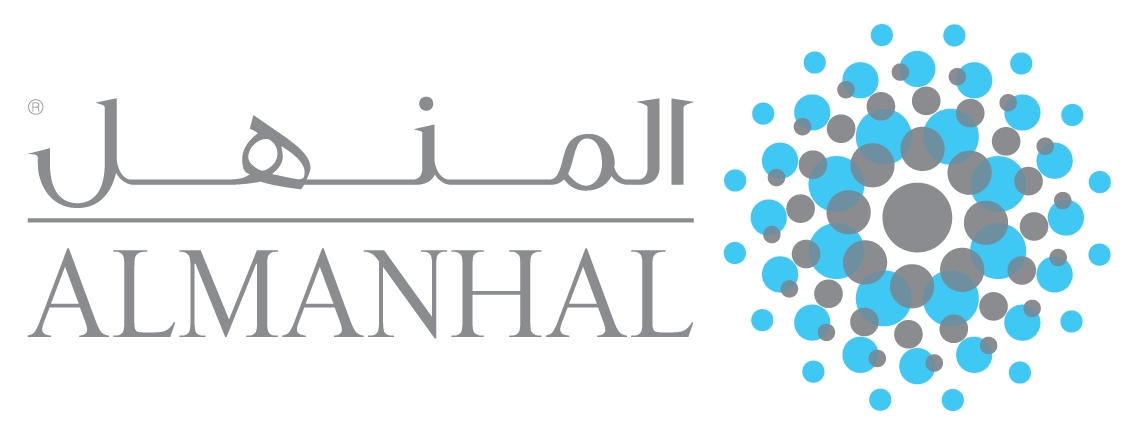Malaysian Consumer Intention toward Takaful Scheme for Mental Health Disorders: A Preliminary Findings using Multiple Regression Analysis
DOI:
https://doi.org/10.31436/jif.v9i1.405Abstract
Mental health disorders are predicted to become the next health concern after heart disease impacting the Malaysians by year 2020. It was reported that one in five teenagers felt depressed, two out of five felt anxious, 11.2% felt suicidal and 10.1% attempted suicide. These statistics are extremely alarming and there is an urge for the Islamic wealth protection operators to introduce a takaful scheme that covers mental health treatment in Malaysia. This paper investigates the factors influencing the Malaysians consumers’ intention towards the takaful scheme for mental health disorders. An applied expanded Theory of Reasoned Action (TRA) model were used in the research and the variables such as awareness, perception, attitude, subjective norm and intention towards the takaful scheme for mental health disorders were investigated. This study is meant as a pilot research carried out in Malaysia. The respondents participated in this study were 60 Malaysians takaful consumers who undertook an online survey in Klang Valley, Malaysia. This study reveals that the mean of attitude with the score of 4.27 is the highest score. The Pearson correlation is positive for both independent and dependent variables. Analysis of regression indicates a strong positive relationship between subjective norm and intention, thus suggesting that subjective norm is an important area that links the intention against the mental health disorder in takaful scheme. This research also proposed for future studies to focus on the factors that affect the willingness of consumers towards takaful mental health disorder schemes. It is hoped that the results of this study will serve as an informative reference for further development of takaful scheme for mental health disorder.
Downloads
References
Abdul-Jabbar, H., Intan, T. P., Awadh, S, N., & Rahim, A. R. (2016). The Application of Theory of Planned Behaviour on Business Zakah Compliance in Yemen: A Proposed Framework. Middle-East Journal of Scientific Research, 24(6), 2052-2057.
Abdullah, A. (2018). Life Cycle Approach to Islamic Wealth Management and Risk Tolerance. Journal of Islamic Finance, 7(2), 1–013.
Ajzen, I., & Fishbein, M. (2002). Understanding Attitudes and Predicting Social Behavior, Prentice-Hall, Upper Saddle River, NJ.
Ajzen, I., & Fishbein, M. (1980). Understanding Attitudes and Predicting Social Behavior, Prentice-Hall, Englewood Cliffs, NJ.
Ajzen, I. (2002). Constructing a Theory of Planned Behavior Questionnaire. Retrieved December 18, 2019, from https://people.umass.edu/aizen/pdf/tpb.measurement.pdf.
Ajzen, I. (1991). The Theory of Planned Behaviour. Organizational Behavior and Human Decision Processes, 50(2), 179-211.
Akbar, S., Shah, S., & Kalmadi, S. (2012). An Investigation of User Perceptions of Islamic Banking Practices in the United Kingdom. International Journal of Islamic and Middle Eastern Finance and Management, 5(4), 353-370.
Cavanagh J. T, Carson A. J., Sharpe M., & Lawrie S. M. (2003). Psychological Autopsy Studies of Suicide: A Systematic Review.
Chatfield, C., & Collins, A. J. (1992). Introduction to Multivariate Analysis, Chapman and Hall, London.
Cronbach, L. J. (1951). Coefficient Alpha and the Internal Structure of Tests. Psychometrika, 16, 297-335.
Dar, H. (2005) Islamic Mortgages, In Iqbal, M., & Wilson, R. (Eds), Islamic Perspectives on Wealth Creation, Edinburgh University Press, Edinburgh, 188-189.
Davis, F. D., Bagozzi, R. P., & Warshaw, P. R. (1989). User Acceptance of Computer Technology: A Comparison of Two Theoretical Models. Management Science, 35(8), 982-1003.
Farooq, M. O. (2014). Islamic Wealth Management and the Pursuit of Positive-sum Solutions, Islamic Economic.
Fishbein, M., & Ajzen, I. (1980). Belief, Attitude, Intention, and Behavior: An Introduction to Theory and Research. Addison-Wesley, Reading, MA.
Fishbein, M., & Ajzen, I. (1975). Belief, Attitude, Intention and Behavior: An Introduction to Theory and Research. Addison-Wesley, Reading, MA.
Gopi, M., & Ramayah, T. (2007). Applicability of Theory of Planned Behavior in Predicting Intention to Trade Online: Some Evidence from a Developing Country. International Journal of Emerging Markets, 2(4), 348-360.
Ha, H., & Janda, S. (2012). Predicting Consumer Intentions to Purchase Energy-efficient Products. Journal of Consumer Marketing, 29(7), 461-469.
Hair, J. F., Black, W. C., Babin, B. J., Anderson, R. E., & Tatham, R. L. (1998). Multivariate Data Analysis (Vol. 5). Upper Saddle River, USA: Prentice Hall.
Haron, S, Ahmed, N., & Planisek, S. (1994). Bank Patronage Factors of Muslim and non-Muslim Customers. International Journal of Bank Marketing, 12(1), 32-40.
Hershey, D. A., & Wilson, J. A. (1997). Age Differences in Performance Awareness on a Complex Financial Decision-making Task. Experimental Aging Research, 23, 257-273.
Hu, T., Stafford, T.F., Kettinger, W.J., Zhang, X., & Dai, H. (2017). Formation and Effect of Social Media Usage Habit. Journal of Computer Information Systems, 58(4), 334-343.
Hussain, F. N., & Noor, A. M. (2018). An Assessment of Customer’s Preferences on the Selection of Takaful over Conventional: A Case of Saudi Arabia. Tazkia Islamic Finance and Business Review, 12(1), 33-60.
Husin, M. M. (2019). The Dynamics of Malaysian Takaful Market: Challenges and Future Prospects. Journal of Islamic Finance (Special Issue), 131 – 137.
Husin, M. M., Ismail, N., & Rahman, A. A. (2016). The Roles of Mass Media, Word of Mouth and Subjective Norm in Family Takaful Purchase Intention. Journal of Islamic Marketing, 7(1), 59-73.
Husin, M., & Rahman, A. (2013). What Drives Consumers to Participate into Family Takaful Schemes? A Literature Review. Journal of Islamic Marketing, 4(3), 264-280.
Izhar, M., Masood, T., & Khan, M. S. (2010). Problems and Prospects of Islamic Banking: A Case Study of Takaful. Aligarh Muslim University, Aligarh, India.
Jamaluddin, R. (2016). More Malaysians expected to suffer from mental illness by 2020. Retrieved from The Star Online, 1 July 2016.
Lada, S., Tanakinjal, G. H., & Amin, H. (2009). Predicting Intention to Choose Halal Products using Theory of Reasoned Action. International Journal of Islamic and Middle Eastern Finance and Management, 2(1), 66-76.
Lutz, R.J. (1991). The Role of Attitude Theory in Marketing, In Kassarjian, H.H. and Roberson, T.S. (Eds), Perspectives in consumer behavior, Prentice-Hall, Englewood Cliffs, NJ.
Maichum, K., Parichatnon, S., & Peng, K. C. (2017). Factors Affecting on Purchase Intention towards Green Products: A Case Study of Young Consumers in Thailand. International Journal of Social Science and Humanity, 7(5), 330-335.
Mansor, K. A., Masduki, R. M. N., Mohamad, M., Zulkarnain, N., & Aziz, N. A. (2015). A Study on Factors Influencing Muslim’s Consumers Preferences towards Takaful Products in Malaysia. Romanian Statistical Review, 2, 79-89.
Mathieson, K. (1991). Predicting User Intentions: Comparing the Technology Acceptance Model with the Theory of Planned Behavior. Information Systems Research, 2(3), 173-191.
Maturi, T.C. (2013). Islamic Insurance (Takaful): Demand and Supply in the UK. International Journal of Islamic and Middle Eastern Finance and Management, 6(2), 87-104.
Maysami, R., & Williams, J. (2006). Evidence on the Relationship between Takaful Insurance and Fundamental Perception of Islamic Principles. Applied Financial Economics Letters, 2(4), 229-232.
Mei, O. J., Ling, K. C., & Piew, H. T. (2012). The Antecedents of Green Purchase Intention among Malaysian Consumers. Asian Social Science, 8(13), 248-263.
Muhamad, S. F., Abdullah, N., Abd Aziz, N. A., & Azmi, N. F. (2016). The Perception and Awareness on Takaful: A Descriptive Analysis between the Gender. Intercontinental Journal of Marketing Research Review, 4(10), 58-63.
Mukhtar, A., & Butt, M. M. (2012). Intention to Choose Halal Products: The Role of Religiosity. Journal of Islamic Marketing, 3(2), 108-120.
Nigg, C. R. (2009). Physical Activity Assessment Issues in Population-based Interventions: A Stage Approach. In G. J. Welk (Ed.), Physical Activity Assessments for Health-Related Research (227-239). Champaign IL: Human Kinetics.
Omer, H. (1992). The Implication of Islamic Beliefs and Practice on Islamic Financial Institutions in the UK, Ph.D. Dissertation.
Salleh, M. C. M., Abdullah, N. I., & Razali, S. S. (2013). Measuring Takaful Agents’ Understanding towards the Objectives and Concepts of Takaful. Journal of Islamic Finance, 2(1), 20-30.
Sentot, S. A., Hung, W. S., Ho, S. H., & Sitohand, P. S. (2015). Influence of Green Marketing towards Purchase Intention of Green Products through Attitude: Survey on Indonesian and Taiwanese Students. International Journal of Humanities and Management Sciences, 3(4), 196-202.
Sheldon, P. (2016). Facebook Friend Request: Applying the Theory of Reasoned Action to Student-Teacher Relationships on Facebook, Journal of Broadcasting and Electronic Media, 60(2), 269-285.
Schleyer, T. K. L., & Forrest, J. L. (2000). Methods for the Design and Administration of Web-based Surveys. Journal of the American Medical Informatics Association, 7, 416-425.
Sinnappan, P., & Rahman, A. A. (2011). Antecedents of Green Purchasing Behaviour among Malaysian Consumers. International Business Management, 5(3), 129-139.
Suddin, L., Geoffrey, H.T., & Hanudin, A. (2009). Predicting Intention to Choose Halal Products using Theory of Reasoned Action. International Journal of Islamic and Middle Eastern Finance and Management, 2(1), 66-76.
Tabachnick, B.G., & Fidell, L.S. (1996). Using Multivariate Statistics, 3rd ed., Harper Collins Publisher, New York, NY.
Taylor, S., & Todd, P. A. (1995). Understanding Information Technology Usage: A Test of Competing Models. Information Systems Research, 6(2), 144-176.
Yadav, R., & Pathak, G. S. (2016). Intention to Purchase Organic Food among Young Consumers: Evidences from a Developing Nation. Appetite, 96, 122-128.
Yadav, R., & Pathak, G. S. (2017). Determinants of Consumers’ Green Purchase Behavior in a Developing Nation: Applying and Extending the Theory of Planned Behavior. Ecological Economics, 134, 114-122.
Yap, S.F., & Noor, A. (2008) An Extended Model of Theory of Planned Behaviour in Predicting Exercise Intention. International Business Research, 1(4), 108-122.
Zhen, J.S.S., & Mansori, S. (2012). Young Female Motivations for Purchase of Organic Food in Malaysia. International Journal of Contemporary Business Studies, 3(5), 61-72.












